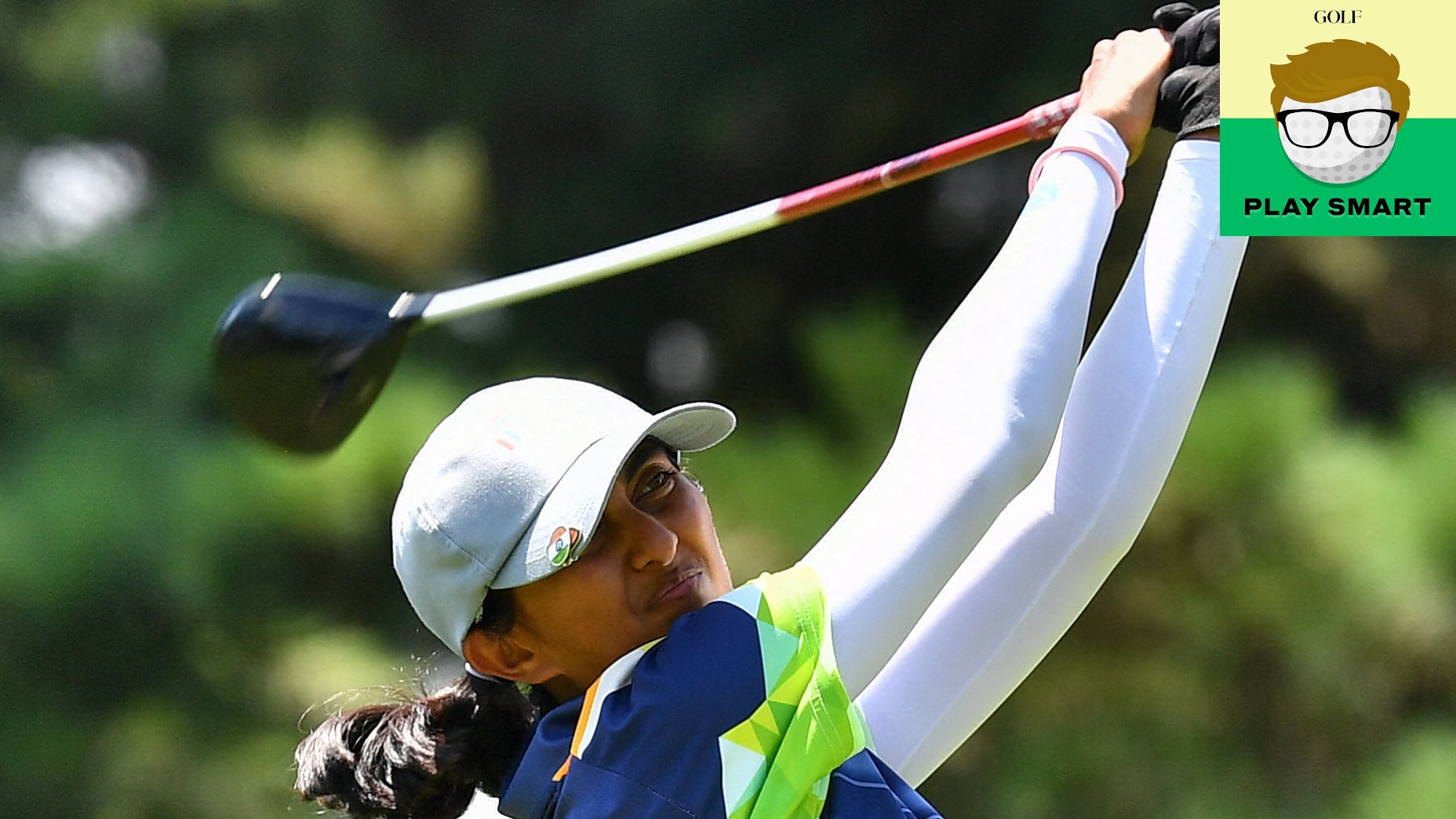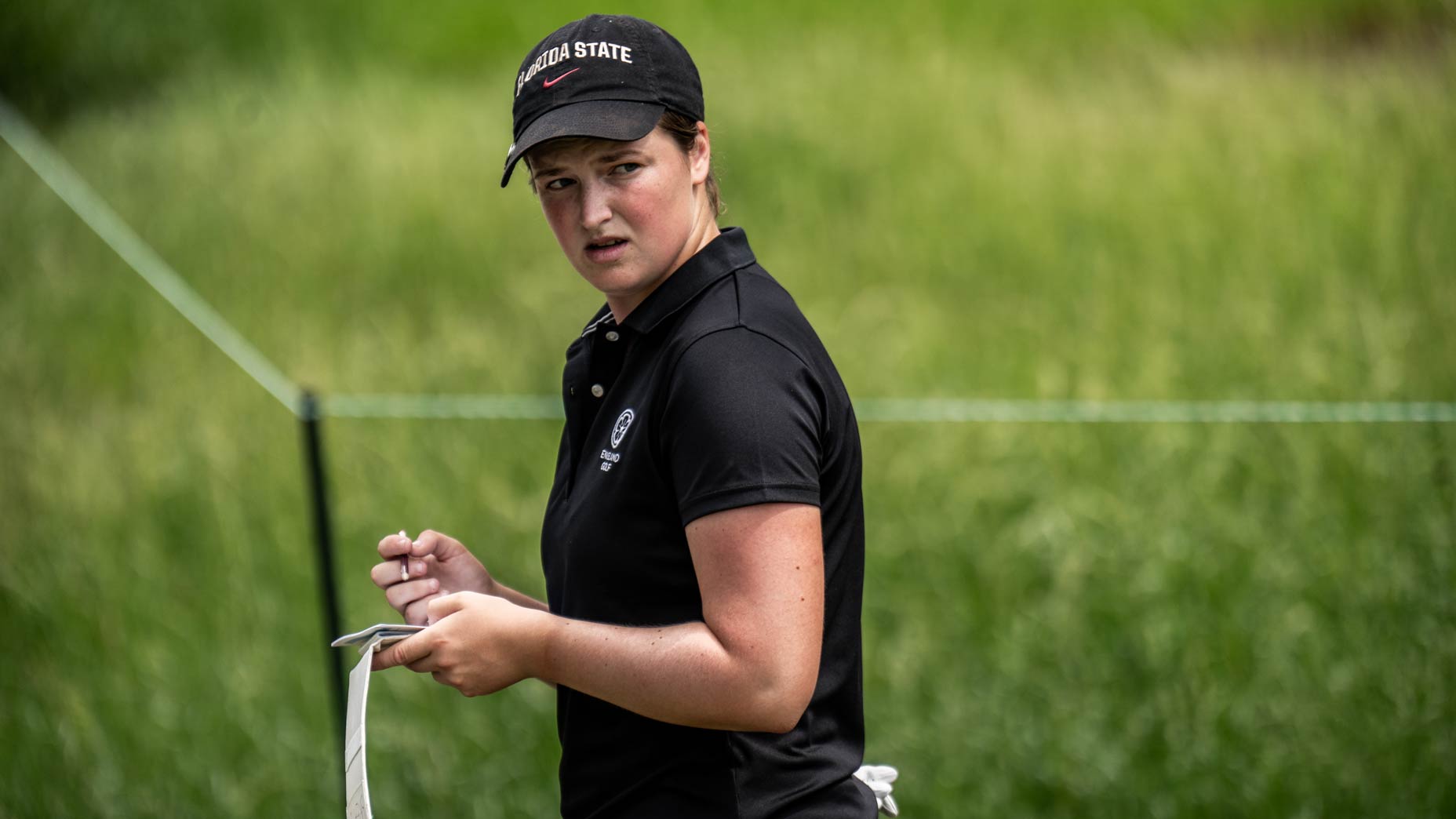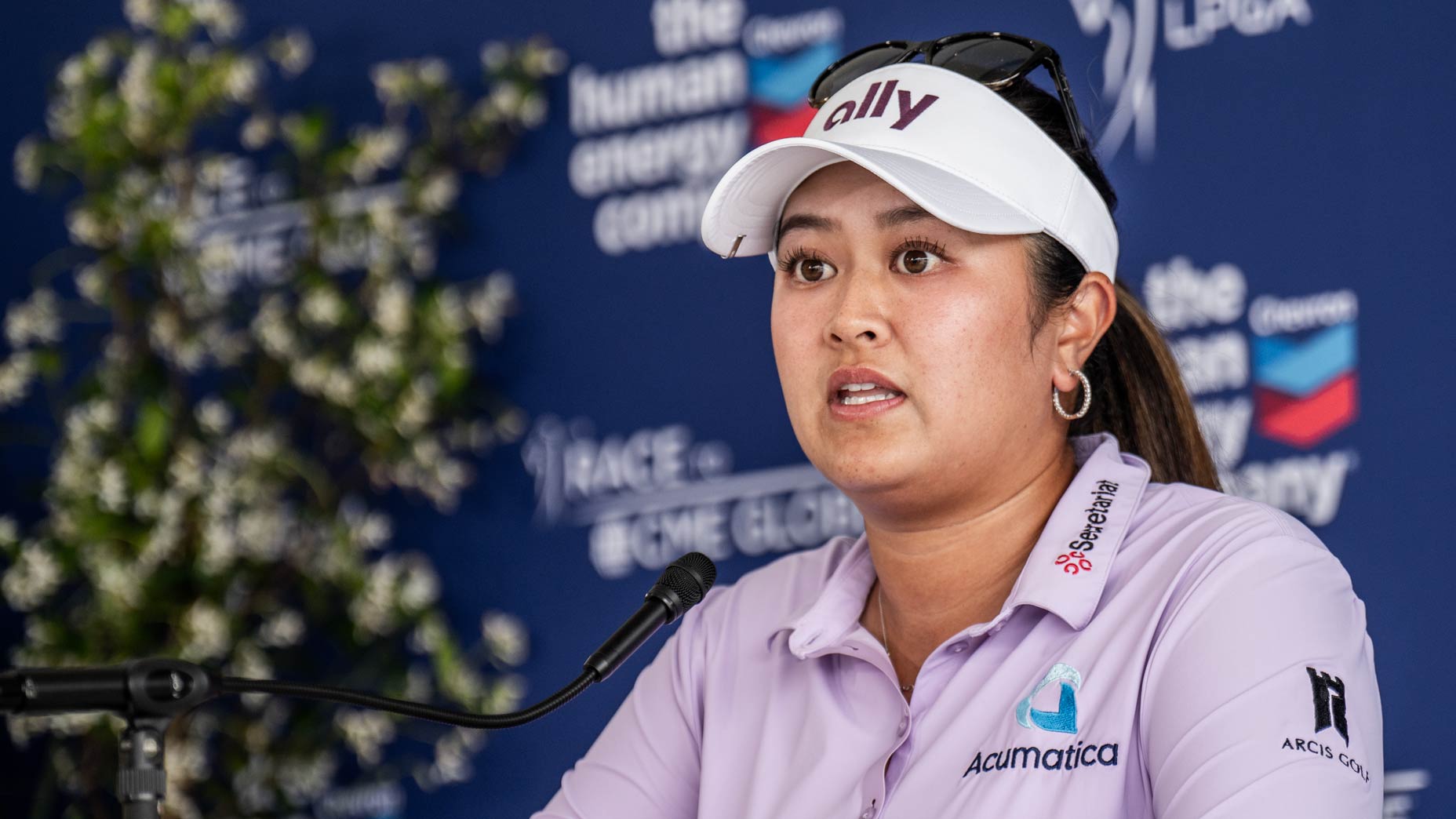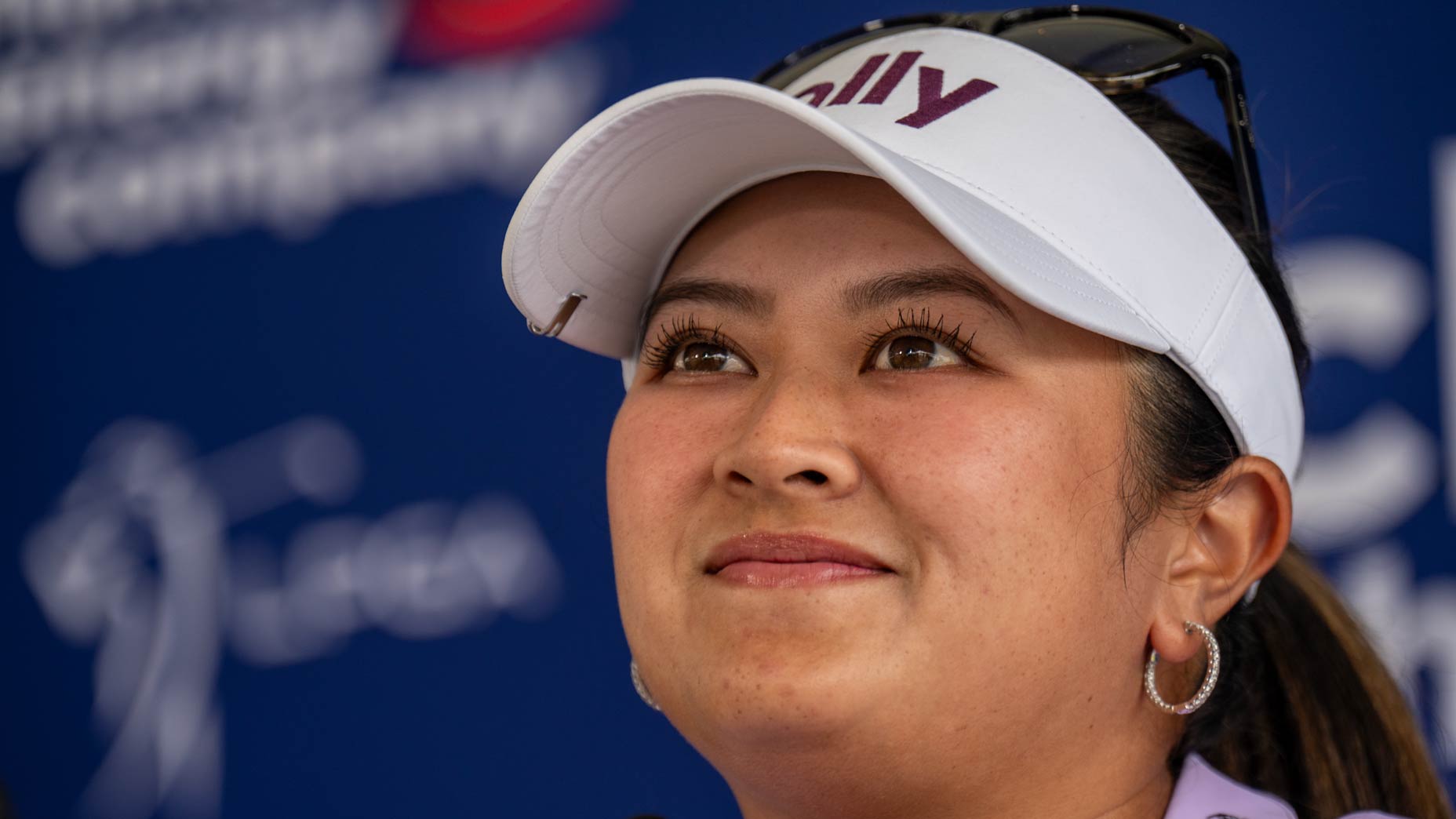Why the shortest hitter at the Olympics may have made the biggest impact
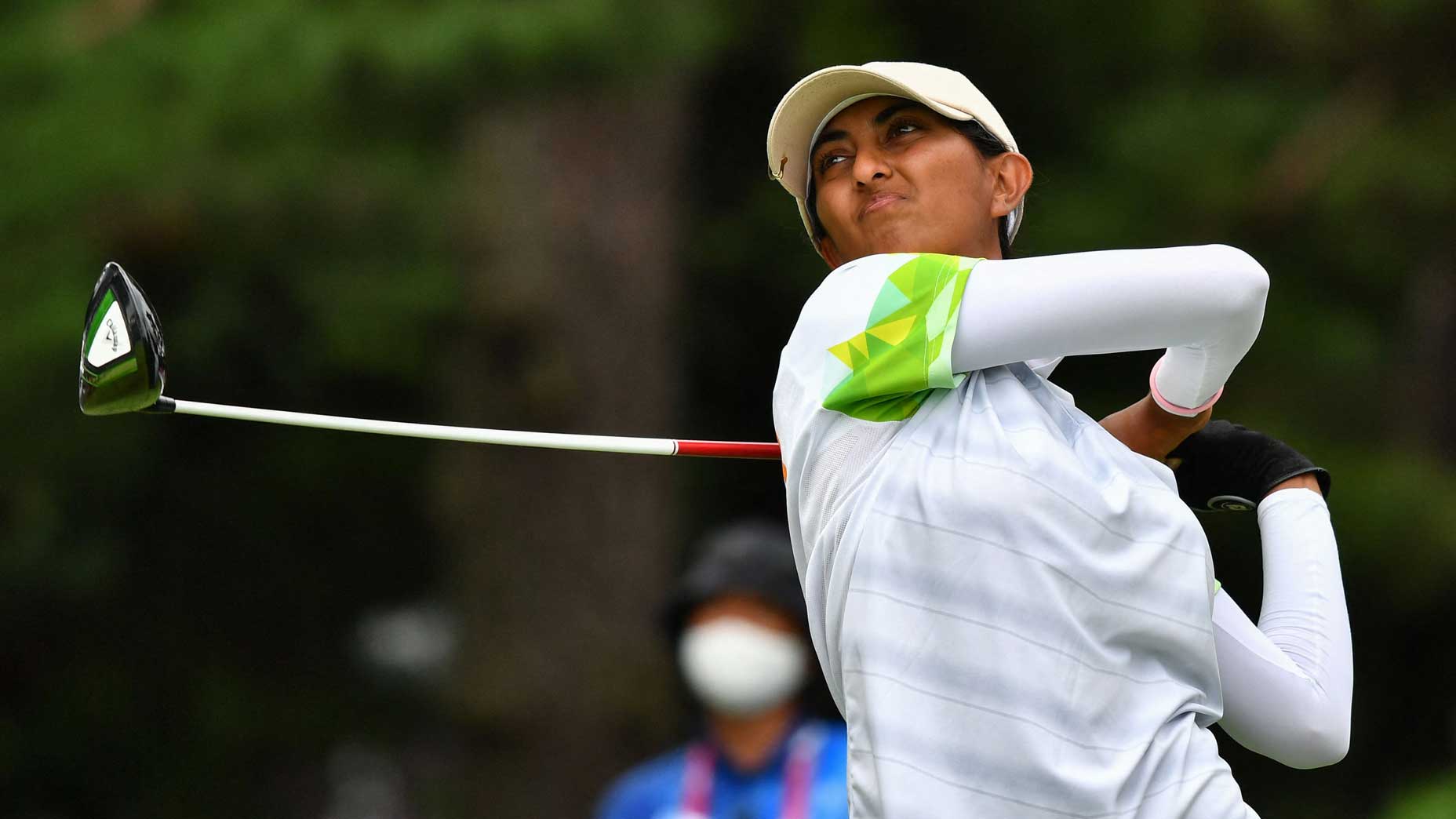
Aditi Ashok hits her tee shot on Saturday on the 13th hole at Kasumigaseki Country Club.
Getty Images
The late and great Bobby Unser used to say that nobody remembers who finished second in a car race except the guy who finished second. But what about the gal who finishes fourth in an Olympic golf tournament?
That’s different.
Aditi is different. And everybody was taking notice.
In the women’s golf event at the Tokyo Olympics, the fourth-place finisher, 23-year-old Aditi Ashok of India, will be as memorable as any of the other 119 Olympic golfers, female and male, who sweated their way around the Kasumigaseki Country Club over the past fortnight. She was not like the others.
Aditi is tall and slender, with a tall and slender swing, but her drives were often crooked and sometimes 20 or 30 or 40 yards behind her long-whacking playing partners. And still she hung in there.
We will remember Aditi’s mother beside her, as her caddie. We’ll remember the five letters, tall and bold — INDIA — stamped across the backs of Aditi’s shirts. We’ll remember the coolness with which she went about her business, despite the H&H index that climbed well past 110. We’ll remember her elegant accent in her post-round interviews.
Also:
The black glove she wore while putting;
Her no-fuss putting stroke;
Her otherworldly putting.
The women’s game is, by far, more of a speed game than it has ever been. Aditi hung with Nelly Korda with chipping, pitching, bunkering — and putting.
In her fourth round, hunting for medal and eternal glory, Aditi needed only nine putts on the front nine. Nine-straight one-putt greens. (How many of us are happy if we have nine-straight two-putt greens?) She had three more one-putt greens coming in. For the week, she gained 13 strokes while putting over her 59 competitors. More than three strokes per day than her competitors. In a normal putting performance, if the best putter gains two strokes over the field while putting, that’s huge.
India was going crazy, as Aditi tried to putt her way to the podium. Golf was going crazy. But Aditi’s caddie mom — who was filling in for Aditi’s normal caddie, her father — was keeping it together. Aditi was keeping it together. Her four rounds — 67, 66, 68 and 68 — left her at 15-under par and one shot out of the Mone Inami-Lydia Ko playoff that determined the bronze (Ko, as it turned out) and silver (Inami) winners.
Aditi, your provisional membership to the club has been reviewed by the committee (Tiger, Rihanna, Denzel): You may travel the world, as they do, on one-name fame.
As an amateur, and for the past half-decade as a pro, Aditi has played across Europe and Asia and the United States. She plays the world. You could see her winning any week, anywhere, if she can keep her putting game and get back the length she says she lost during a May and June bout with Covid-19. Get those 15 or 20 yards back and then some. These days, you can find length. It’s in the shakes and the gym and the marriage of shaft and ball. At least, that’s what people doing the selling say.
Amy Alcott, the LPGA legend and Hall of Famer from Los Angeles, was watching from home. She’s not selling a thing, but she observed the golf with heightened interest. She was the co-designer of the course used at the Olympics in Rio five years ago. As an LPGA player, she made 36 trips to Japan. While watching the fourth round, she said by text that the game is more dominated by speed than it was even five years ago.
“There is a strength and an athleticism that my generation didn’t have, and this generation has it in spades,” Alcott said. “They’ve gotten better since Rio. They’re managing their games better.”
And yet, and yet, and yet —
There’s always a place for an iron-hot putter.
Alcott couldn’t get enough of Aditi.
“She has a simple routine and she trusts it,” Alcott said. Like Aaron Baddeley has over the years and as Elle Nachmann has shown in this week’s U.S. Amateur at the Westchester Country Club, there’s a lot to be said for stepping in and making your stroke.
The Kasumigaseki greens were oh-so-smooth magic-carpet rides. That helped. Get the putt on line and it would stay on line. Aditi got her putts on line.
Another LPGA legend, Kathy Whitworth, said, “The putting stroke is beautiful, but that doesn’t mean much if you can’t read greens. She read those greens beautifully. They were bent, and they were perfect, from what they were saying on TV. “ In other words, they rewarded a perfect stroke — and a perfect read.
“The absolute darling of the event is Aditi Ashok from India,” Jim “Bones” Mackay, working the event as an on-course commentator, said by text. “Unbelievable putter. Stats back it up.”
That was cute of Bones, to cite Aditi’s surname and homeland. In the cocoon of the golf, he might not have known. The whole world knows.
Just a quick note about Mackay (whom this reporter counts as a friend): Since putting down Phil Mickelson’s bag and putting on an NBC Sports headset, his work has been excellent and informative, and his deep love of golf shows up in some of the game’s less exposed places, including women’s events and amateur events. Aditi said that one of the nice things for her father, having the week off, was watching the telecast and listening to Mackay’s commentary.
“My dad’s enjoying watching me on TV and enjoys listening to Bones commentate on my game,” Aditi said after the third round. “So that’s been cool.”
Everything about her play was cool. India has 1.3 billion people, and golf is barely an afterthought there. But Aditi, as a topic trending on Twitter in India, was leading the country as Aditi played her fourth round, her father watching, her mother caddying, Mackay offering play-by-play of her putting in real-time for a world that was taking notice. Aditi is good for golf, as is golf in the Olympics. She played in the Rio Games. She could represent India when the Games go to Paris in three years.
One of the best things about golf in the Olympics is that there are multiple winners. In this case, gold, silver, bronze, Aditi, golf. Still, when it was all over, Aditi borrowed from her fellow club member, Tiger, and from Bobby Unser, too:
“In a regular tournament, whether you finish second or fourth, it really doesn’t matter, no one cares. But at this event, you need to be in the top three. I didn’t leave anything out there. I think I gave it 100 percent. But fourth at an Olympics, where they give out three medals, kind of sucks.”
Well, she’s earned her opinion, of course. She was too close to the whole thing to see what we could see: Here comes the rest of her golfing life. She’ll make many more putts. With that stroke? Absolutely.
Michael Bamberger welcomes your comments at Michael.Bamberger@golf.com



